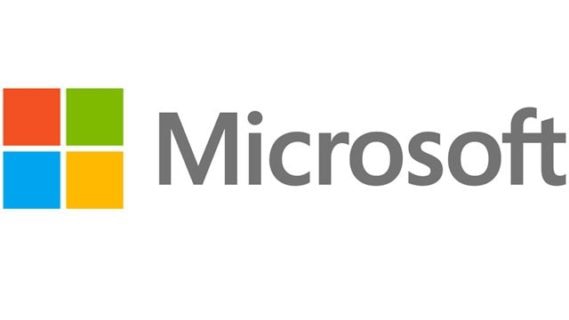March 18, 2022
Delivering the Future of K-12 Education
Powerful new technologies create more agile, versatile and effective learning environments.
IN THIS ARTICLE
Classroom Technology and the Modern Learning Environment
The Building Blocks of the Future of Education
Moving into the Future of Education
A Shifting Landscape for Education
Technology has been the most powerful driver of change in K¬–12 education in recent memory, pushing educators to re-examine long-held beliefs about pedagogy and reimagine established classroom traditions. Ubiquitous devices, widespread connectivity, robust learning platforms and emerging technologies continue to transform not only what children learn but also how they learn and how they demonstrate their mastery to others.
In the process, the roles of teachers and students have dramatically shifted. As technology has empowered students with more agency and choice in their learning experiences, teachers have become facilitators as much as instructors. Today’s learning communities are more egalitarian, collaborative and personalized than in the past, largely as a result of the expanded curricula and activities that technology makes possible.
Remote learning represents another major chapter in the evolution of K–12 education. It has challenged schools to prepare teachers and students alike to thrive in the modern learning environment. It has highlighted a persistent digital divide, and it has intensified the demands on IT professionals.
A recent survey by the International Society for Technology in Education (ISTE) and BrightBytes found that the majority of teachers, students and parents say they always or usually have access to device-related technical support from their schools when they need it. The flip side of this positive outcome, of course, is that IT staff are spending a significant amount of time responding to these requests, even as they manage new workloads, transition to or expand the use of cloud computing, and address new security threats and vulnerabilities.
As districts address these issues, they can position themselves for a stronger, more innovative future by investing in teachers’ professional development, engaging in comprehensive, stakeholder-driven planning, and building IT departments that make use of flexible, strategic technology solutions.
AN EVOLUTION IN EDUCATION
The role of technology in education has changed dramatically. Computers — once a classroom rarity — are now essential tools for teaching and learning.
Educators began to align technology and pedagogy more deliberately in the 2000s. Ultimately, they designed lessons around content and tasks for which computers were not optional.
Educators are also rethinking the learning environment. As technology opens doors to active learning and self-directed exploration, teachers are becoming architects of collaborative learning rather than disseminators of top-down instruction.
These shifts have enabled new curricular possibilities. Students are learning to code, creating video games and robots, and deepening their science studies. Educators are focusing on critical thinking, collaboration and creativity.
Technology in the Classroom and the Modern Learning Environment
Changes in the role of technology in education have also transformed the responsibilities of IT staff. The emphasis on classroom technology and the widespread adoption of one-to-one device programs have placed massive demands on school infrastructure, particularly networking. IT leaders have had to adapt staffing accordingly, ensuring they have the skills to support everything from cloud computing to educational software.
PANDEMIC RESPONSE
In early 2020, the COVID-19 pandemic forced schools to move quickly to remote learning. The pandemic has forced IT departments to accomplish in weeks what they normally might have tackled in months. Districts that lacked one-to-one device programs have struggled tremendously, and IT teams have been at the forefront of efforts to overcome these hurdles.
INSTRUCTIONAL SHIFT
Districts’ remote learning experiences have added momentum to calls for changes in pedagogy, for improvements in digital equity and for innovation in the use of classroom technologies. Many schools are renewing their focus on programs that prepare teachers for technological fluency within a modern pedagogical approach, one that delivers high-quality instruction both face to face and online.
STUDENT CHALLENGES
For students who lacked adequate devices or high-speed internet access at home, the same technologies that once opened doors to new learning experiences became a barrier to keeping up. Schools and districts raced to provide computers for all students to use and worked to solve the connectivity challenge.
CONTINUED ADVANCES
K–12 educators continue to develop the modern learning environment. The emerging technologies of today — virtual reality, artificial intelligence–powered personalized learning and data-driven analytics — will push the boundaries of education even further. As educators advance pedagogy for the modern age, the role of technology will shift accordingly, adding value to IT solutions that are adaptable and flexible.
REMOTE EDUCATORS
Before the pandemic, some teachers had integrated digital content into their approaches, but many were unprepared for remote learning. They struggled to engage students and to translate lessons to the virtual space. They had to develop new ways to provide access to assignments, facilitate collaboration and communicate with students and families.
Learn how CDW is helping districts deliver the future of K–12 education.
93%
The percentage of parents of K–12 students who say their children have received some online instruction since the start of the global pandemic1
53%
The percentage of K–12 parents who say U.S. schools should provide a mix of in-person and online instruction2
34%
The percentage of parents with children whose schools were closed during the pandemic who say their child encountered technology-related obstacles to completing schoolwork1
67%
The percentage of K–12 parents who say concerns about students falling behind academically should be a consideration when weighing whether schools should be open for in-person learning2
Sources: 1pewresearch.org, "What we know about online learning and the homework gap amid the pandemic," Oct. 1, 2021; 2pewresearch.org, "Academic, emotional concerns outweigh COVID-19 risks in parents’ views about keeping schools open," Feb. 4, 2022
The Building Blocks of the Future of Education
From an IT perspective, the modern learning environment has greatly expanded staff’s scope of responsibility. Technology teams must facilitate teaching and learning in physical, virtual and hybrid classrooms, across all grade levels and within diverse academic disciplines. Success depends on selecting the best tools and creating an ecosystem that maximizes the extent to which those tools can integrate seamlessly and securely.
Components of an Effective Learning Environment
Districts face a number of important decisions regarding the primary and supporting solutions they use to enable both remote and in-person learning.
CONNECTED DEVICES
Tablets, laptops and smartphones have become a primary means of K–12 instruction. Many K–12 schools have long had one-to-one device programs for some or all grade levels, taking advantage of the benefits of standardization for both users and IT. Districts may favor devices that are flexible and robust enough to support the demands of remote learning, including downloading and streaming videos, participating in synchronous class sessions, running specialized software and collaboration platforms, and maintaining security.
INFRASTRUCTURE
Many districts have prioritized networking enhancements and upgrades to support one-to-one device initiatives and the increased use of digital content in classrooms. Amid the pandemic, that focus shifted to networking capabilities outside the school; specifically, students’ internet access at home. As remote learning revealed major discrepancies in students’ connectivity, districts placed Wi-Fi hotspots on buses and in communities, lent out Wi-Fi hotspots and partnered with municipalities to expand internet access.
AUDIOVISUAL SOLUTIONS
Monitors, cameras and audio equipment transform online instruction from a static, content-focused activity to an engaging, interactive experience. The ability for students and teachers to see, hear and speak with one another adds depth and connection to synchronous sessions in which classes are all online at the same time. This connection can be especially important as teachers strive to maintain engagement with younger students and with those who may need additional support.
CLOUD SERVICES
The nature of the school calendar, with heavy technology use only nine months of the year, makes the cloud an attractive cost-saving strategy. Application and desktop streaming services allow flexible use of both apps and hardware. This democratizes the use of industry-leading software by students, who can use popular design, engineering and gaming apps on any device. IT staff can fine-tune the required computing power for individual applications to provide an optimal user experience.
SOFTWARE
Online learning software includes learning management systems (LMS), videoconferencing and collaboration platforms, video recording software and applications developed specifically for K–12 education. Integration among these solutions, particularly between the LMS and meeting platform, is a critical task for IT. LMSs are the one-stop shop for teachers, students and parents: feature-rich solutions that serve as an administrative hub. In remote learning, roughly 70 percent of teachers say they use the LMS as their primary educational platform.
Learn how the right solutions can create a more effective learning environment.
Addressing Security Challenges
As schools continue to incorporate technology solutions into their learning environments, cybersecurity remains a top priority. A recent report from SolarWinds highlighted the top security concerns and priorities of IT leaders in the education sector.
26%
The percentage of education IT leaders who cited budget constraints as an obstacle to IT security3
53%
The percentage of education IT leaders who cited careless or untrained insiders among the greatest sources of IT security threats3
76%
The percentage of education IT leaders who cited access management solutions among their main investment priorities for IT security3
91%
The percentage of education IT leaders who say they are very or somewhat likely to incorporate federal best practices for cybersecurity3
Source: 3SolarWinds, "Public Sector Cybersecurity Survey Report 2021," November 2021
Moving into the Future of Technology in Education
For K–12 education, the pandemic tested one of the most difficult qualities for any organization to achieve: readiness for change. In a field already undergoing significant transition, the move to remote learning has revealed an entirely new set of obstacles and challenges — but also opportunities. As districts continue to recover from this period of intense change and return to normalcy, many will redefine for their communities what normal looks like.
Whatever vision districts pursue, the most successful strategies will address professional development for teachers, high-level planning and forward-looking adaptation for IT.

ADDRESS TEACHER READINESS
Even as technology becomes central to day-to-day classroom activities, many teachers say they need more training to be able to use such tools effectively.
Notably, even teachers who are enthusiastic about technology-enhanced education may feel insufficiently prepared. For teachers who are reluctant to give up traditional pedagogies, the transition is even more difficult. For both groups, professional development should be ongoing, because educational technologies will evolve and educators will continue to refine the alignment of pedagogy, curricula and classroom practices.
Professional development should be flexible, with modular, online courses giving teachers the most options to pursue training that matches their schedules. It should also be customizable, so teachers can spend time on the areas where they most need help.

IMPLEMENT BROAD-BASED PLANNING
Any initiative related to learning spaces, whether online or brick-and-mortar, requires input from stakeholders across the district. Even though IT teams will deploy the solutions that ultimately support the learning space, such initiatives are about learning, not technology. Engaging colleagues across academic departments and school campuses is critical to develop the buy-in that will ensure proper implementation and optimal ROI.
Before districts decide which solutions to buy, they should engage in robust planning and visioning to establish key objectives. Districts often look to third-party experts to facilitate these processes and to provide guidance on the best way to align goals and IT solutions. The focus for any endeavor should be a holistic approach to educational technology that addresses the needs of all stakeholders and delivers the best user experience.
ADAPT TECHNOLOGY ROLES
Just as educators can expect additional transformation of their day-to-day workflows, so can IT staff. New classroom technologies, increased demands on networking and cybersecurity, and the strategic shifts inherent in cloud adoption have dramatically expanded the purview of IT leaders and staff. To manage these expanded responsibilities, many IT leaders have focused on staff training and skill development. IT’s role within the educational organization also has grown, with more IT leaders becoming involved in high-level strategic planning and decision-making.
Together, these developments mean that many IT departments are experiencing a fundamental shift in how they deliver services to their schools. Depending on available resources, these transitions can be challenging for IT staffs to absorb. Many find that the right technology solutions, together with professional and managed services, take a meaningful burden off IT teams. That, in turn, allows them to focus on optimizing and supporting solutions so they can provide the best service to their communities.
Story by:
Wendy Jones
Yagna Pant
Katerina Nikolaides
Learn how CDW can help your school or district achieve its vision for the future of learning.







